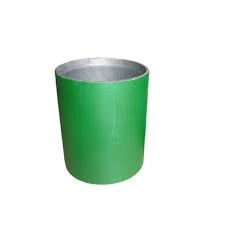- Afrikaans
- Albanian
- Amharic
- Arabic
- Armenian
- Azerbaijani
- Basque
- Belarusian
- Bengali
- Bosnian
- Bulgarian
- Catalan
- Cebuano
- Corsican
- Croatian
- Czech
- Danish
- Dutch
- English
- Esperanto
- Estonian
- Finnish
- French
- Frisian
- Galician
- Georgian
- German
- Greek
- Gujarati
- Haitian Creole
- hausa
- hawaiian
- Hebrew
- Hindi
- Miao
- Hungarian
- Icelandic
- igbo
- Indonesian
- irish
- Italian
- Japanese
- Javanese
- Kannada
- kazakh
- Khmer
- Rwandese
- Korean
- Kurdish
- Kyrgyz
- Lao
- Latin
- Latvian
- Lithuanian
- Luxembourgish
- Macedonian
- Malgashi
- Malay
- Malayalam
- Maltese
- Maori
- Marathi
- Mongolian
- Myanmar
- Nepali
- Norwegian
- Norwegian
- Occitan
- Pashto
- Persian
- Polish
- Portuguese
- Punjabi
- Romanian
- Russian
- Samoan
- Scottish Gaelic
- Serbian
- Sesotho
- Shona
- Sindhi
- Sinhala
- Slovak
- Slovenian
- Somali
- Spanish
- Sundanese
- Swahili
- Swedish
- Tagalog
- Tajik
- Tamil
- Tatar
- Telugu
- Thai
- Turkish
- Turkmen
- Ukrainian
- Urdu
- Uighur
- Uzbek
- Vietnamese
- Welsh
- Bantu
- Yiddish
- Yoruba
- Zulu
API 5CT Tubing Couplings for Oil and Gas Industry Applications and Standards
Understanding API 5CT Tubing Couplings An Overview
In the oil and gas industry, effective communication between various components of drilling and production systems is crucial. One essential component that serves this purpose is the tubing coupling, specifically those manufactured according to API 5CT standards. This article will delve into the significance of API 5CT tubing couplings, their design, and their application in the field.
What is API 5CT?
API 5CT is a specification set forth by the American Petroleum Institute (API) for the standardization of casing and tubing used in oil and gas wells. The specification covers a range of products, including casing, tubing, and the essential connections between them, which are made possible through couplings. The API 5CT standard ensures the quality and compatibility of these components under varying environmental and operational conditions.
Purpose of Tubing Couplings
Tubing couplings play a pivotal role in connecting sections of tubing, allowing for the transmission of fluids from underground reservoirs to the surface. They not only facilitate the assembly of tubing strings but also ensure the integrity and reliability of the entire system. Properly designed couplings prevent leaks, mitigate pressure losses, and provide mechanical support, which is crucial during drilling and production operations.
Design Features
API 5CT tubing couplings are designed with specific attributes that enhance their performance
1. Material Properties Typically manufactured from high-strength carbon steel, API 5CT couplings must endure high pressures and temperatures encountered in the wellbore. The materials used often have increased corrosion resistance to withstand harsh environments.
2. Pitch and Thread Standards Tubing couplings are threaded to facilitate ease of connection. The API 5CT standard includes specifications for the type of threads used, ensuring compatibility across different manufacturers and field operations.
3. Wall Thickness The wall thickness of couplings can be adjusted based on the expected loads and pressures. The API 5CT standards specify minimum thicknesses for various grades of tubing, ensuring the couplings can handle the necessary stresses.
api 5ct tubing coupling

4. Tensile and Yield Strength Couplings must have adequate tensile and yield strengths. The properties are classified in different grades, such as H40, J55, K55, and N80, among others, all defined in the API 5CT specification.
Applications in the Field
API 5CT tubing couplings are widely employed in various stages of oil and gas exploration and production. Their primary applications include
1. Drilling Operations During the drilling phase, couplings connect lengths of tubing that transport drilling fluids to the surface and help maintain pressure within the wellbore.
2. Production Operations Once drilling is complete, tubing coupled with these connections is used to extract oil and gas from underground reservoirs. The integrity of the coupling is crucial to prevent leaks, which could lead to catastrophic failures.
3. Workover Procedures In the life cycle of a well, workover operations may be necessary to enhance production efficiency. API 5CT couplings facilitate the replacement or addition of tubing strings during these processes.
Importance of Quality and Standards
The reliance on API 5CT standards underscores the importance of quality control in the manufacturing of tubing couplings. Products that meet these standards not only ensure compatibility but also enhance the safety and operational efficiency of the overall system. Non-compliance can result in significant operational risks, increased costs, and potential hazards, thereby making adherence to these standards non-negotiable for industry stakeholders.
Conclusion
In conclusion, API 5CT tubing couplings are a fundamental component in the oil and gas industry, enabling the efficient and safe transportation of fluids from reservoirs to the surface. Their robust design, adherence to strict standards, and versatility in application underline their importance in maintaining operational integrity. As the oil and gas sector continues to evolve, the role of API 5CT tubing couplings will remain pivotal in ensuring the industry operates safely and efficiently. Understanding their significance helps professionals make informed decisions regarding their selection and implementation in various drilling and production scenarios.
-
Tubing Pup Joints: Essential Components for Oil and Gas OperationsNewsJul.10,2025
-
Pup Joints: Essential Components for Reliable Drilling OperationsNewsJul.10,2025
-
Pipe Couplings: Connecting Your World EfficientlyNewsJul.10,2025
-
Mastering Oilfield Operations with Quality Tubing and CasingNewsJul.10,2025
-
High-Quality Casing Couplings for Every NeedNewsJul.10,2025
-
Boost Your Drilling Efficiency with Premium Crossover Tools & Seating NipplesNewsJul.10,2025







